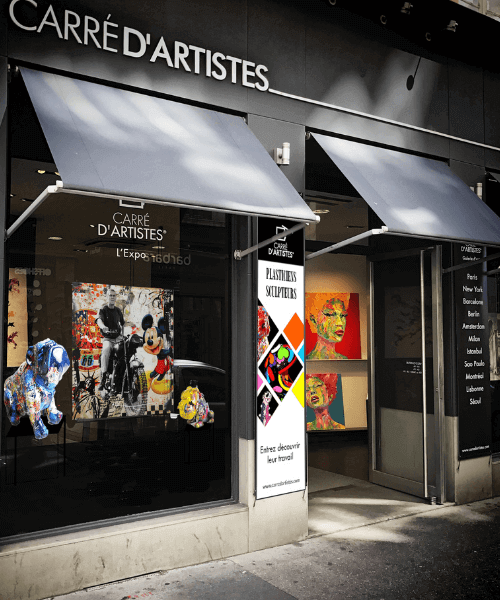The main contemporary artistic movements
With the end of World War II, new artistic currents emerge in a climate of global turmoil.
Since that time, contemporary art has continued to evolve and enrich itself with artistic movements breaking with modern art. Several movements have defined this period in the history of art.
How to choose a contemporary artwork?
What are the trends in contemporary art? Here is a brief history of the main contemporary artistic movements.
Summary
- The emergence of contemporary art currents
- Abstract Expressionism or the New York School
- The new realism
- Conceptual art
- Minimal art or minimalism
- Land art or environmental art
- Hyperrealism
- Pop art
- Street art or urban art
The emergence of contemporary art currents
Contemporary art is characterized by a constant search for novelty and a new way of imagining everyday life.
These experiments give rise to several major trends in contemporary art.
Abstract Expressionism or the New York School
Abstract Expressionism or the New York School
From 1942, the Abstract Expressionist became the first American abstract art movement to gain an international audience.
This avant-garde artistic movement, born in New York, allowed the United States to shine internationally.
A complete break from figurative art, Abstract Expressionism explores new ways of painting.
It encompasses 2 streams:
- Action Painting: gestural painting embodied by painters Jackson Pollock and Willem de Kooning;
- The Colourfield trend: artists like Mark Rothko expressing themselves through solid solid colors.
The new realism
Contemporary of American pop art, the movement of new realism was founded in 1960 by the painter Yves Klein and the art critic Pierre Restany. It uses the name of "realism" which refers to the artistic and literary movement born in the nineteenth century intended to describe an everyday reality without magnifying it.
This new kind of realism is tied to the reality of the urban consumer society.
Contemporary of pop art, it is often presented as its French version. He embodies one of the many artistic trends of the 1960s.
.png)

Conceptual art
This artistic movement considers that art is not an object.
Art is not defined by the aesthetic characteristics of objects or works, but only by the concept or idea of art.
Artists who advocate conceptual art give primacy to the idea that precedes the creation of the work rather than to the finished work.
Minimal art or minimalism
Born in the United States in the mid-1960s, this current of contemporary art is characterized by an economy of means and stripped-down works.
It is an artistic current that was born in reaction to the subjective overflow of abstract expressionism and the figurative tendency of pop art.
The American abstract painter Ad Reinhardt is one of its pioneers.
Land art or environmental art
Land art is an American and European artistic movement that emphasizes the use of natural materials.
The attention of sculptors, artists and painters is focused on their surroundings.
They are interested in new spaces such as natural sites.
These artists question the capacity of museums and art galleries to exhibit these new forms of art.
This questioning is accompanied by a political challenge to the art market and traditional exhibition venues.
Hyperrealism
This artistic movement approaches painting from a photographic point of view.
In other words, hyperrealism intends to reproduce contemporary life objectively.
Hyperrealistic artists create works inspired by the techniques of photorealism.
In painting as in sculpture, these works imitate reality to perfection.
Pop art
This artistic movement, born in Great Britain in the early 1950s, quickly spread to the United States in the 1960s and then to the rest of the Western world.
Pop art artists find their inspiration in the mass consumer society.
They hijack objects linked to the consumer society by using the codes of advertising and popular culture.
Pop art affects the plastic arts as well as music and fashion.
The pictorial works of pop art respond to a logic of seriality and are based on techniques resulting from industrial innovation. *
Street art or urban art
Street art is an artistic movement born in the United States in the 1970s with the first tags in the New York subway.
Subsequently, this artistic movement spread to Europe in the 1980s.
This contemporary movement encompasses all forms of urban art.
The techniques used are graffiti, stencils, mosaics, stickers or installations.
It is a form of ephemeral art seen by a very large audience.
Street art questions the definition of classical art with works usually exhibited in museums and galleries.
Still considered a marginal art by some, street art continues to integrate into society as an art in its own right.
Complementary articles
On the subject:
Choose a contemporary artwork
find out more :
- What is contemporary art?
- Contemporary art history
- Well-known contemporary artists
- Difference between modern and contemporary art



